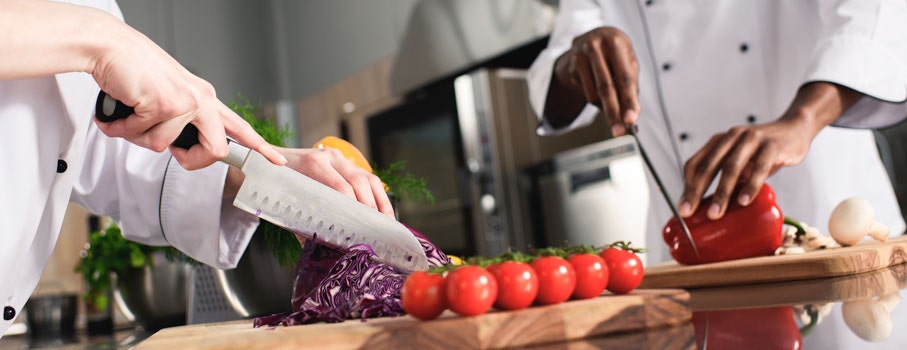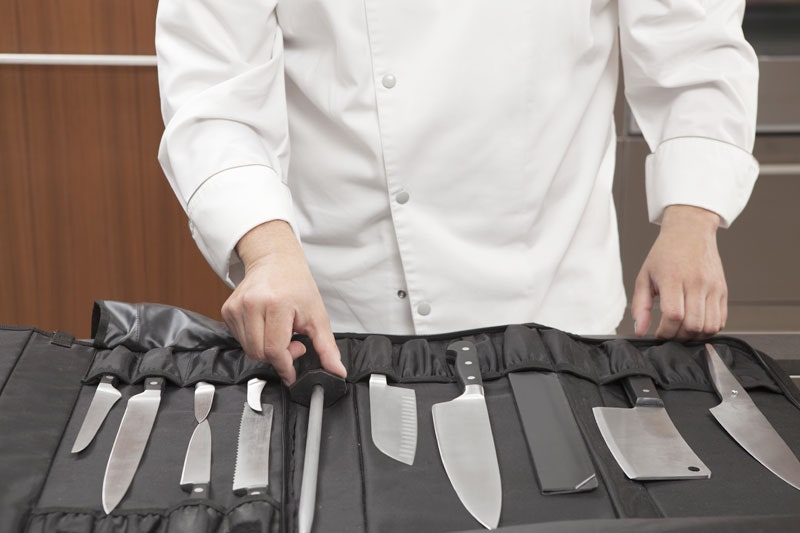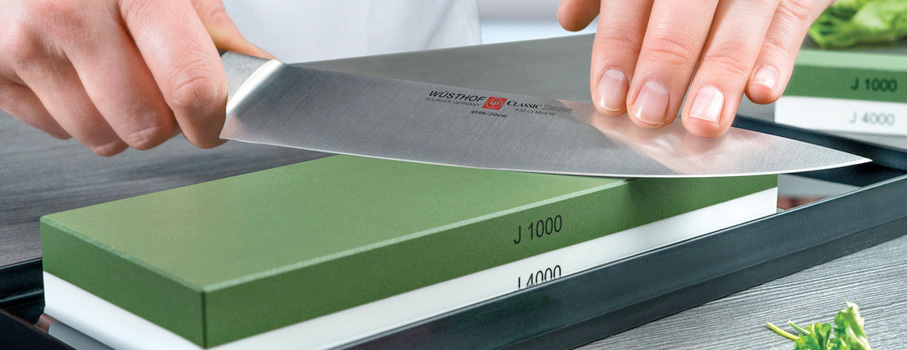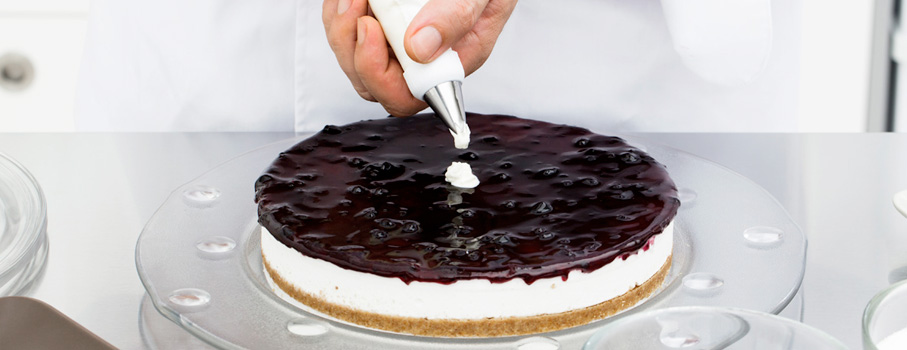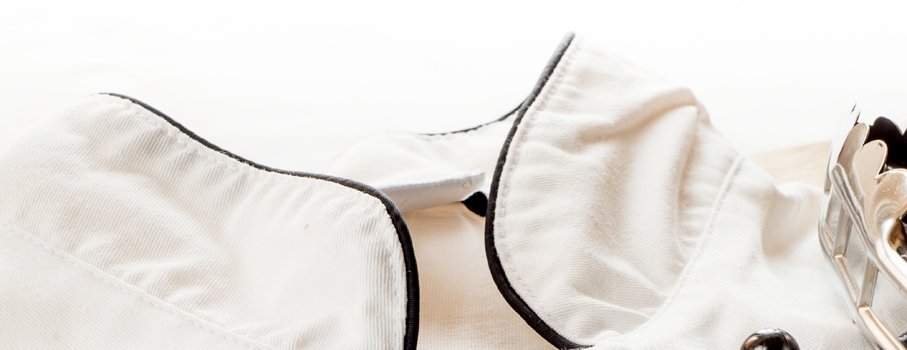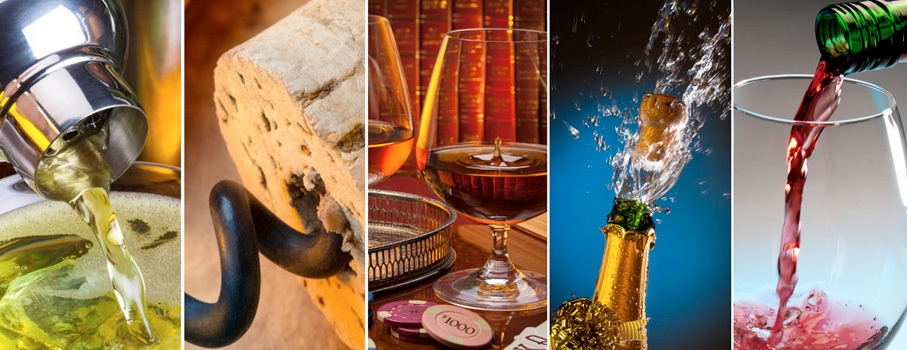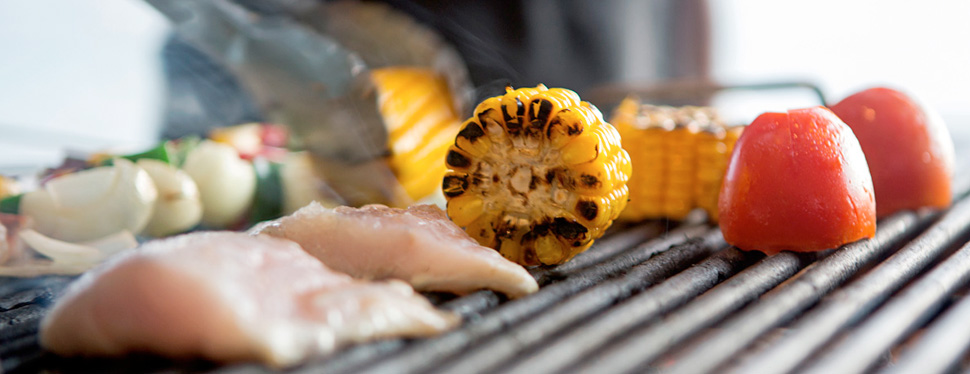Chef's knife: its usefulness in the kitchen

The chef's knife, often known as a chef's knife, is the most important tool in the kitchen. It is multifunctional, sturdy, and ideal for a variety of cuts.
The chef's knife is one of the earliest types of culinary utensils.
While many kitchen appliances, such as vegetable slicers, blenders, toasters, stoves, and ovens, have evolved over time, the chef's knife or carver hasn't. It is one of the oldest kitchen tools.
The cook's knife, sometimes known as a chef's knife, can be used to slice, mince, mash, scallop, chop, and fillet a variety of dishes and cuts.
Even though Japanese knives - with a thinner blade and bent spine - have increasingly infiltrated the production of the major European knife makers, the predominant style we use today is derived from the French and German tradition.
Why should you invest in a chef's knife?
The chef's knife is a multi-purpose all-purpose knife with a blade length ranging from 18 to 30 cm.
Long blades are better for professionals or critical cuts, but the length of the blade becomes a factor that varies depending on the size of the food you're cutting, but it's also a very personal choice.
Cooking is a personal experience; some people prefer to use longer blades while others prefer shorter blades.
The chef's knife, on the other hand, will become the most significant kitchen equipment; you'll use it for roughly 70% of your cuts, so size and blade quality are important considerations.
The chef's knife does not fit all cuts; if you want to bone meat, peel potatoes, or cut bread, you'll need a different knife; nonetheless, for many everyday cuts, it serves as a real utility knife.

What are the most significant features to consider when purchasing a chef's knife?
A excellent chef's knife has a number of distinguishing characteristics:
- You'll need a blade that's both sharp and durable. Each high-quality knife has been sharpened and is ready to use. The carving knife or chef's knife must be sharpened robustly and not too thinly. The chef's knife's numerous cuts allow for precise, but also sturdy cuts, and sharpening is essential on this knife.
- A good quality steel, preferably stainless steel rather than carbon steel, because stainless steel is easier to maintain; Damascus steel is a fantastic choice, as it ensures a long-lasting cut, outstanding blade flexibility, and an exquisite look.
- A well-balanced knife should feel similarly weighted on both sides with the index finger close to the knot, thus neither the blade nor the handle should be much heavier than the other.
- A firm grip is necessary for optimal comfort when using. The handle should be smooth and free of sharp edges, but the material should have no bearing on the overall quality. It could be made of a good polymer for a comfortable grip, a beautiful laminated wood that has been treated to endure washing over time (excellent knives are frequently produced with stabilized wood), and it must also have a decent handle design that allows you to securely grip the handle in your hand.
- You should also think about your weight. The chef's knife can't possibly be too heavy. If you're cutting for a long time and have to make a lot of cuts, a knife that's too heavy could tire you out. The knife, however, must not be too light. Some low-cost, ultra-light knives are likewise brittle and unsuitable for long-term use.
- Long lasting and easy to clean; any excellent quality knife should not be washed in the dishwasher and should instead be washed by hand. Avoid using abrasive sponges since they will scrape the knife and destroy the thread. Always go for versions that don't have grooves or have a unique design that can hold food after usage. The more hygienic a knife is, the simpler its line is and the easier it is to wipe the handle.
After selecting your chef's knife, you should feel at ease with it, as if it were an extension of your hand.

What's the difference between a chef's knife made in Europe and one made in Japan?
The majority of kitchen knives are either German or Japanese produced. The hardness of the steel and the angle of the cut are the key differences between the two.
Japanese knives have thinner blades than German knives, allowing for a sharper edge, usually in the range of 15-16 degrees, as opposed to 20 degrees on Western-style knives. Most Western-style blades have a curved edge that allows for rocking cuts, whereas Japanese blades have a straighter edge that allows for clean, accurate cuts.
Most German knives have a solid tang design, which means that the blade and tip are made of the same piece of steel.
Japanese blades taper inside the handle, resulting in a lighter, frontal knife with better control.
Japanese kitchen knives are precise cutting tools that are mostly used for slicing. German blades are more versatile, and can be used to cut, mince, and slice.
Chef's knives of the "Japanese style" are becoming increasingly popular, and even traditional German and French knife manufacturers are producing knives with these qualities.
A Japanese-style chef's knife isn't ideal for splitting a chicken or chopping a pumpkin since it lacks the strength required for these jobs.
Also, unlike a German-style knife, its edge has a straighter profile (less curvature), thus it doesn't always swing smoothly.
Here are some examples of chef knives in the Japanese style:
Global Chef knife
The blade of this exquisite knife is narrow and sharp, and it has shown to be quite competent and exact.
When compared to heavy German-style knives, it is extremely light. The absence of curve in the blade makes it difficult to swing, and the knife is knotless, with a sharp angle at the blade's end and a narrower grip.
Kai Shun Classic Chef Knife
Chef's knife that is slender, sharp, beautifully balanced, and extremely comfortable. The lack of support and tang, like other knives in this series, can take some getting accustomed to. This knife comes in both left-handed and right-handed versions.
Here are some examples of the German-style chef's knives:
Classic Series Chef Knife by Wusthof
Chef's knife with a forged structure, complete tang, and three rivets that fits well in the hand and is perfectly balanced between blade and handle.
The knife's structure anticipates the bump in the middle, between the blade and the handle, but neither the blade nor the handle are unduly heavy, indicating that the knife is well balanced.
The blade curls at the end, making some chores easier, particularly chopping herbs rapidly. The handle is quite smooth, even though it is not rounded, so none of the edges dig into the palm of the hand.
The thumb is comfortably positioned on the blade, and the backing is beautifully curled to fit the middle finger at the bottom.
Dick 1905 Series Chef's Knife
The handle of this German-made chef's knife is uniquely built, with three steel rings replacing the rivets. It's a big knife, with a Japanese-style central tang that's been lightened to make it easier to handle and balance. With a rocking action, the German-style blade curve is good for cutting or mincing.
Victorinox Fibrox Series Chef's Knife
Ques
With a blade as wide as a chef's knife and a very sharp cut, this knife is perfect for cutting meat and vegetables. It features a molded structure and a handle made of Victorinox's patented polymer.
Because the knife's structure does not feature a tang, it must be gripped by the handle rather than the junction between the handle and the blade.
The blade is thin and fits precise cuts, but it is not strong enough for tough cuts.
Cristina Passarotto

 IT
IT FR
FR
